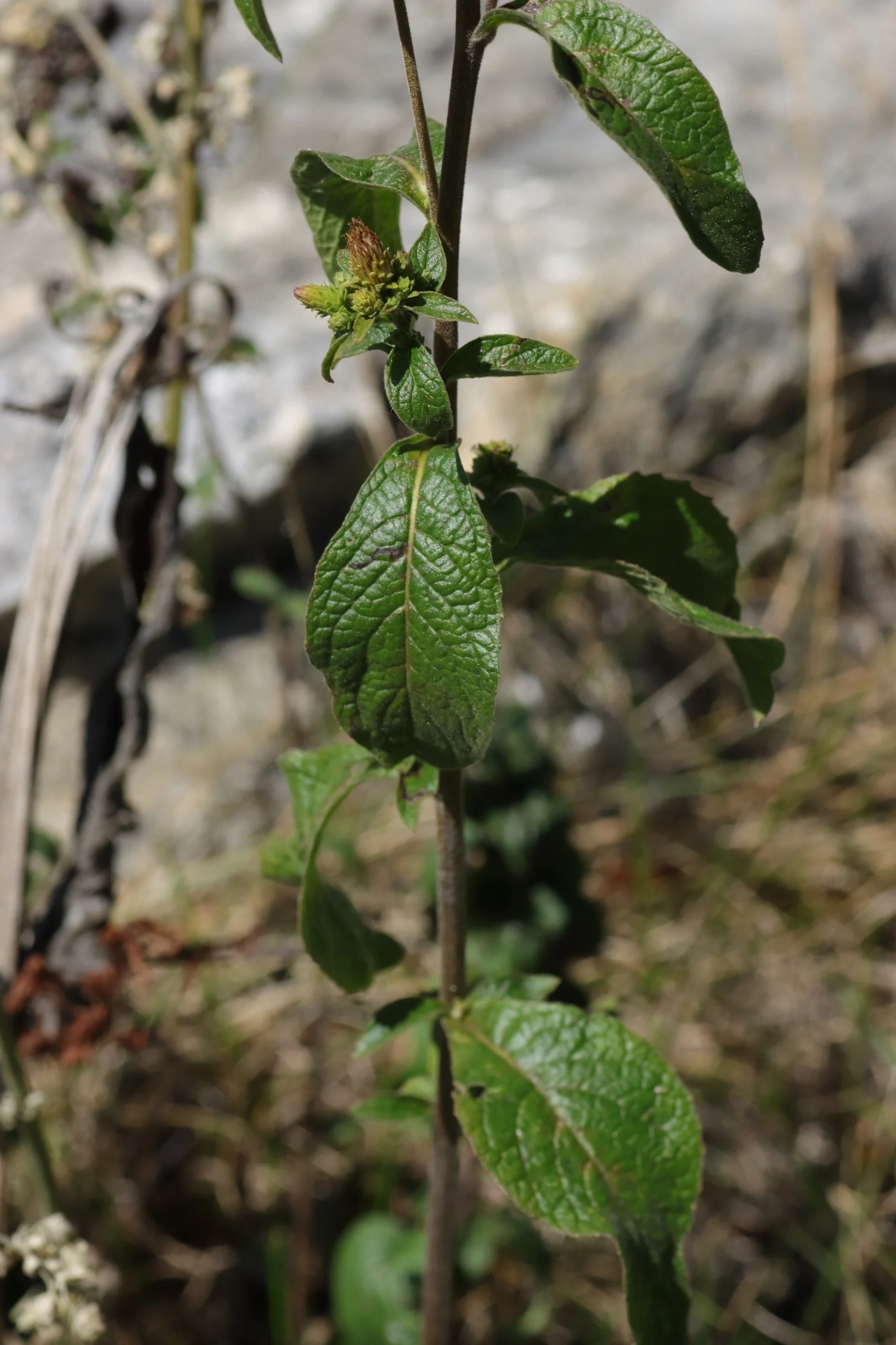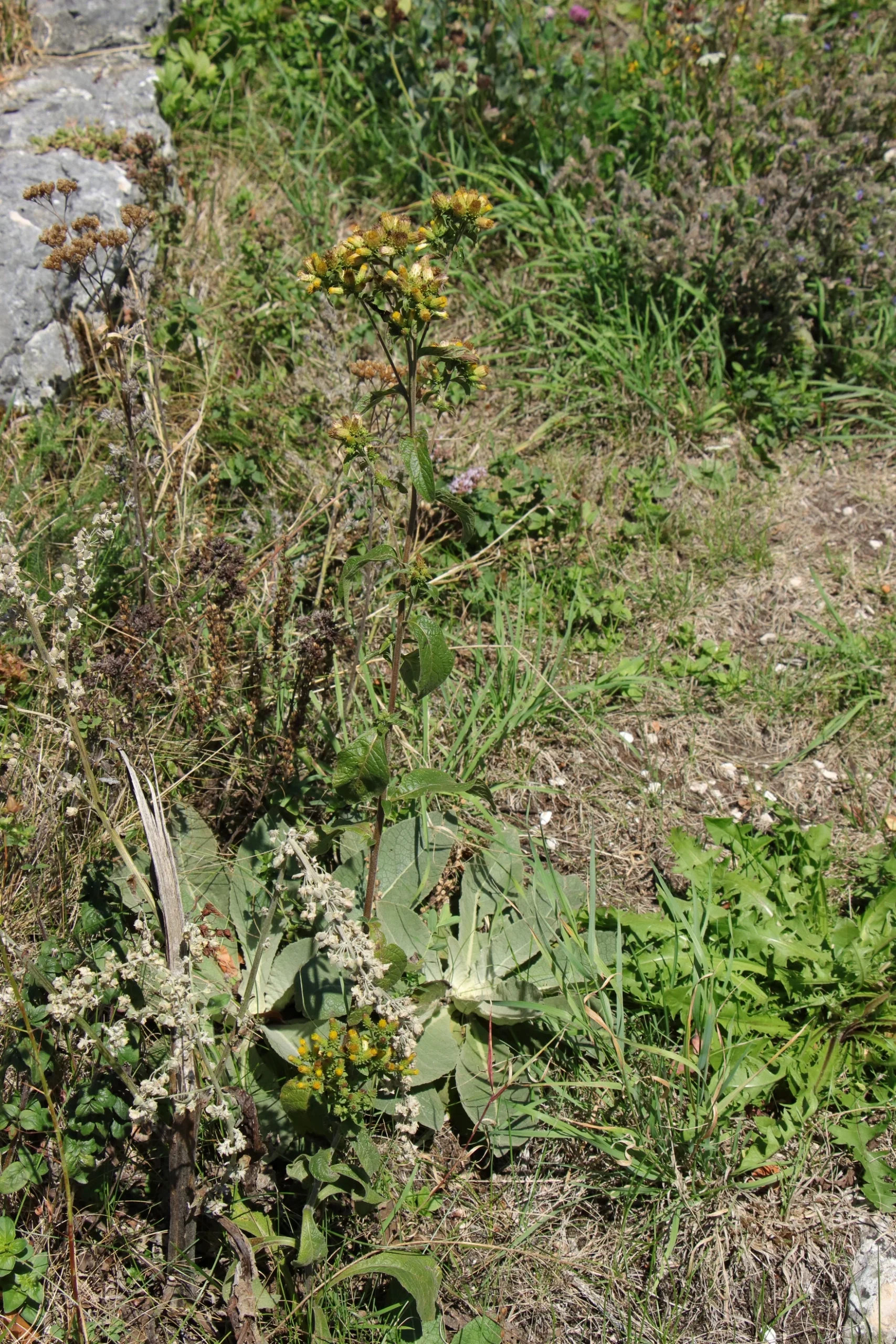The ploughman’s spikenard is probably the most inconspicuous member of the genus “Inula”. The roots were used in the past against all kinds of diseases.



Occurrence and distribution: The ploughman’s spikenard occurs on dry forest edges, clear-felled areas, dry grasslands and forest edges. The plant can also be found in man-made places such as gravel and sand pits and disused railway tracks. It prefers nutrient-poor, base-rich soils. It is a warmth-loving species that often grows in sunny places. In Germany, the ploughman’s spikenard can be found in southern and central Germany. In the north it is almost completely absent except for a few occurrences. -> Distribution map on FloraWeb (german website)
Plant description
Growth form: It is a perennial, herbaceous plant with an thick root. In the lower part of the plant, it is only slightly branched. The upper part is richly branched, especially in the area of the flowers. The dark brown stems are covered with short, felt-like, white hairs. The plant reaches a height between 40 to 120 cm.
Leaves: The leaves sit close to the main stem. They become smaller towards the top. The leaves have an ovate to lanceolate shape and are bluntly rounded at the tip. On the top of the leaf the veins are light brown or whitish. The leaves themselves appear dark green and have a rough surface.
Flowers: The flowers of the ploughman’s spikenard have a golden-yellow colouring. When they fade they turn to darker brown. They have no (rarely short) petals. The flowers consist mainly of ray florets with protruding stamens. The flowers are between 5 to 10 mm in diameter. The green-coloured bracts are slightly curved downwards and protrude from the flower. The individual flower heads sit in a kind of panicle. Pollinators of the flowers include Hymenoptera and Digger wasps. The flowering period is from June to October.
Seeds: The seeds of the plant sit at the end of the small pappus. The seeds are spread by the wind or by animals passing by. The individual seeds can reach a length of up to 2 mm. They are brownish to black in colour.
Former uses of the plant
Former use as a medicine: In the past, the root of the plant was used to treat wounds. This was the case, because the substances contained in the ploughman’s spikenard have a wound-healing effect. It was also used to treat scrofula disease – a skin condition associated with tuberculosis. It is unclear whether the application resulted in an improvement of the skin condition, but it was also popularly used to alleviate scabies.
Name Origin & Folk Names
Folk names: The plant is known by various folk names in germany. These include “großer Dürrwurz (because of the dry places it can grow), großes Flöhkraut (which would translate to great flea-weed – from its use agains fleas), Mückenkraut (because of its use agains mosquitoes)”. The name “Flöhkraut” is said to be derived from the use of the smoke when burning the plant. This smoke was supposed to help as a repellent against fleas, mosquitoes and bedbugs
Origin of the plant name: For the origin of the botanical genus name “Inula” see “echter Alant!“ (no translation available yet). A detailed research on the origin of the name was conducted there. A specific meaning for the botanical species name “conyzae” (in old sources: conyza) cannot be determined. According to different sources, various origins of the name can be established. These can be found in the following sources: Pocket dictionary for botanists and all friends of botany as well as The etymology of phanerogamennomenclature,
One possibility of explanation arises from the Greek word “κόνυζα”. This was applied to the genus of occupational herbs. Since the flowers of the “Dürrwurz-Alant” have a similarity to those of the occupational herbs, a connection was made via the species name.
Endangerment of the plant
Endangerment of the plant: The ploughman’s spikenard classified as not endangered on the Red List of Germany.
Distribution codes: A, AV, M1, M2, (F)